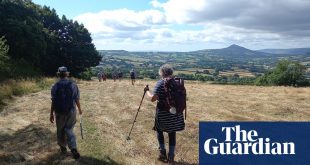What is the best view in London? It’s a tricky question. Perhaps it’s from the South Bank, with the gothic spires of the Houses of Parliament, a building whose beauty so nearly redeems its essential absurdity. For sunsets, it’s hard to match Frank’s Cafe in Peckham, the bar dropped on the roof of a multi-storey car park: every time I have been the sky has glowed orange, pink and violet, as bright and wild as the city beneath. To the question of what is the best view of London, there’s a clear answer: that from the hill at the top of Greenwich Park. Nowhere else captures the history, the beauty and the manic diversity of the greatest megacity of them all.
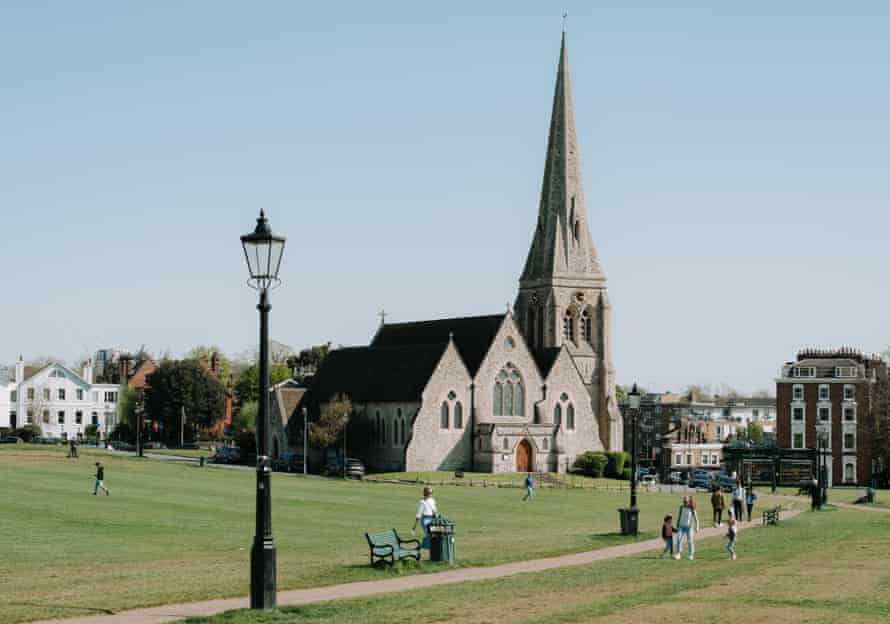
It’s a perfect spring day, sunny enough for shirtsleeves and sunglasses. I start from Blackheath, a village doing its best to hide in London. From the station, I nose up the hill towards the common, where square patches of grass are bleached yellow, remnants of some charming fete organised, presumably, by those living in the grand Georgian houses on its border. Children and dogs run wild to the horizon.
I cross the A2 and enter the gates of Greenwich Park, where the mood changes. It is walled, manicured, bound by rules. One feels invited here; guests should behave. I duly follow an avenue of horse chestnut trees to the bright domes and ginger stone of the Royal Observatory. On the roof of the main building, Flamsteed House, there’s a huge ball, cherry red, pierced by a six-metre-high weather vane. Turns out it’s a clock, of sorts. Every day at 12.55pm, the ball rises halfway up the mast. At 12.58pm, it reaches the top, and at 1pm it falls again. The cycles began in 1833, at the height of British naval power. From their decks out on the Thames, sailors would wait for the signal, timepiece in hand, ready to make adjustments. Attentiveness was necessary: one glass of rum too many and they’d have to wait a day for the next signal.
I’m at the brow of the hill now, the slope steep enough for couples to wheeze as they make their way up. When they turn, they gawp. The park flows down to imperial majesty, the white stone and huge windows of the Old Royal Naval College, Queen’s House and the National Maritime Museum. To the right (east), nestling in the crook of the river, is the O2 (built as the Millennium Dome), a monument to 20th-century hubris. Scattered around it are the vestigial shipyards and wharfs of a London past, a London that traded in things, not concepts. To the left, across the water, are the great gleaming temples of commerce, the Shard, the Cheesegrater, the Gherkin. Below them is St Paul’s, proud and proper.

When I look at it, I for some reason think of my late Welsh grandfather, my dadcu, wearing a tie every day, clinging to form and order as the world raced away from him. This is the place to see all at once the medieval city of stinking streets, the command centre of an empire, the myth of a nation, of crests, of lions and mermaids, and the altar of the capitalist faith. It is a city that is ancient and modern, a city that evolves by death and renewal.
After coming down the hill, I cross the river by the Greenwich foot tunnel and head west along the Thames. The water is rough today and I can feel spray on my face from waves more than four metres below. Gulls wheel, picking at fish. In the 1950s, the river was thought biologically dead. The Victorian sewers had been destroyed by German bombs, leaving the Thames an oozing, noxious drain. But recovery after the war, combined with tighter regulations on chemicals, led to a rejuvenation. Now, the river still looks murky. But the fish have come back – 125 species of them – and brought with them a variety of birds, including cormorants and herons. At Billingsgate market, Sammy the seal has been a regular. Even porpoises pop up from time to time. Death and renewal.
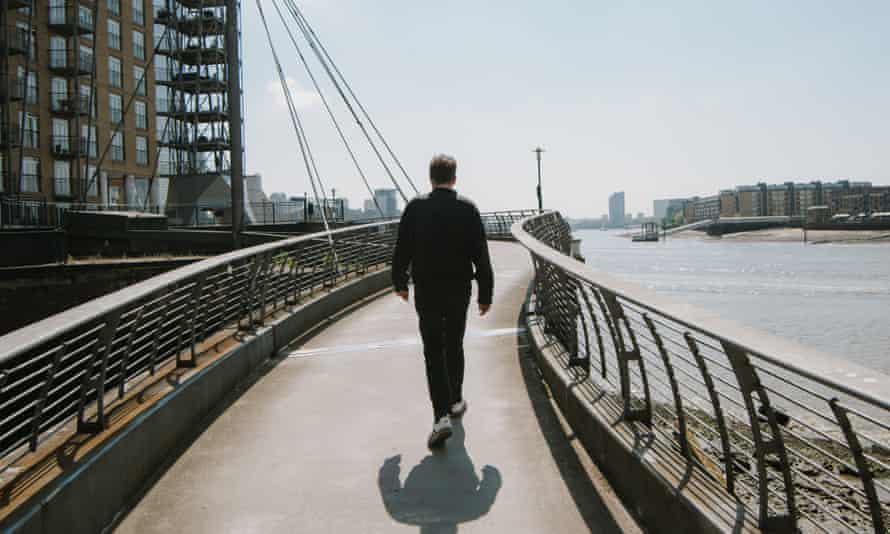
I round a bend and Canary Wharf rears up. The view from the end of the Isle of Dogs is a heavy-handed satire. At ground level are council blocks and basketball courts full of kids playing with old balls. Above are the shimmering towers, all glass but no shame. The tallest goes straight up in three parallel panels, looking like a motorway – and with all the charm.
Start Blackheath station
Distance 5.1 miles
Time 2½ hours
Total ascent 50 metres
Difficulty easy
Google map of the route
Allow Google content?
This article includes content provided by Google. We ask for your permission before anything is loaded, as they may be using cookies and other technologies. To view this content, click ‘Allow and continue’.
The pub
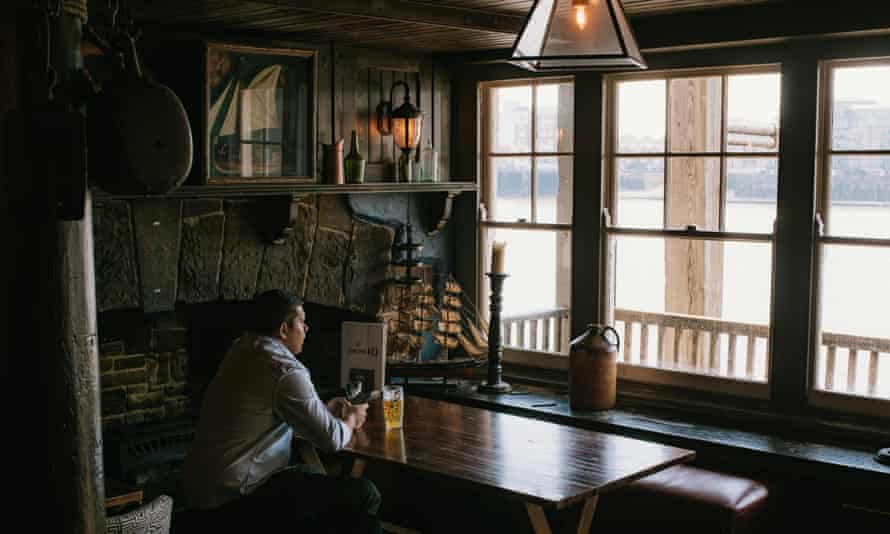
Just south of Shadwell Basin lies the Prospect of Whitby, a pub not so much on the river, as of it: when the tide is in, the windows feel like portholes. In front of the wooden bar is a row of barrels: because of regular flooding, half the cellar had to be walled off, so there isn’t room below deck. Through the back, the modest courtyard offers stunning views north-east and south-west along the shining water. The menu is less spectacular, but that’s not the point of the place. I had a mushroom and ale pie – thick, hot and rich – with a pint of Black Sheep Best, and revelled in the Englishness.
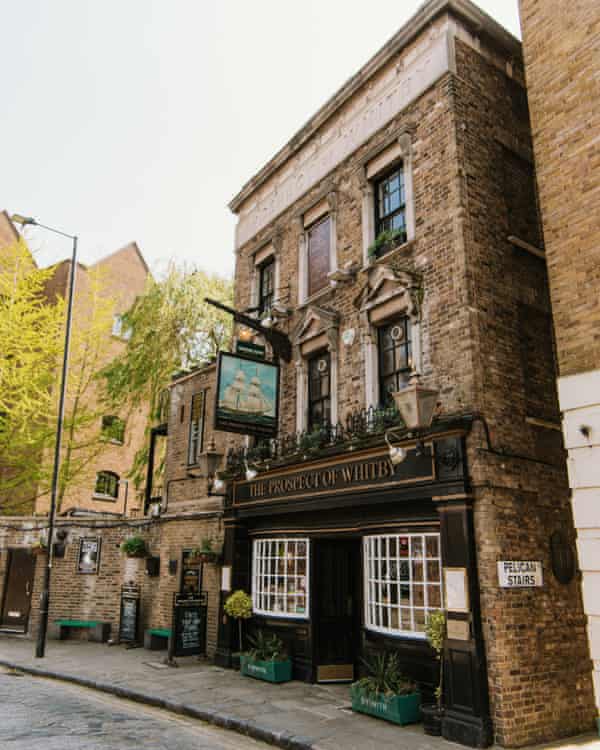
People have been coming here to drink since 1520, making it probably the oldest riverside pub in town.
First it was The Pelican, though thanks to the crowd it attracted, it was also known as the Devil’s Tavern. Outlaws gathered here before and after raids on the lightermen ferrying goods from ships anchored in the Thames. Meanwhile, the upstairs Pepys Room was used for boxing and cockfighting. Things calmed down in the 17th century: Judge George Jeffreys lived locally and would frequently visit. Some of those he convicted were hanged from nearby Execution Dock (in mordant tribute, a platform and noose now stands outside the pub). A little further down the path, pirates would be chained to the post of Wapping Old Stairs and left to drown on the tide.
A fire in the early 19th century destroyed the building, leaving little but the stone floor. In time, the pub was rebuilt and named the Prospect of Whitby, after a collier ship that berthed just in front. Charles Dickens had the odd beverage here and Turner and Whistler sketched the views. In the following century, Princess Margaret would sometimes sit in the bay window with a G&T.
Still, the past lingers. Stories of ghostly cutthroats and smugglers abound. The manager tells me he once saw a shape bouncing around by the platform where the noose is. As I look out to the water I’m not scared. I get it: if I come back after I die, this is where I would spend eternity.

Where to stay
There is no accommodation at the Prospect of Whitby, but a 15-minute walk east towards Limehouse brings you to the Royal Foundation of St Katherine, a charity hotel and retreat centre with a 900-year-history. It began life in 1147 as a church and hospital next to the Tower of London. Come here for airy rooms and peaceful reflection in its central courtyard, complete with a magnificent London plane.
Doubles from about £140 room-only, rfsk.org.uk
 Top Naija News: Nigerian News, Breaking News Nigeria and World News Top Naija News is a daily news publication in Nigeria, delivering the latest breaking news in Nigeria and around the world.
Top Naija News: Nigerian News, Breaking News Nigeria and World News Top Naija News is a daily news publication in Nigeria, delivering the latest breaking news in Nigeria and around the world.
